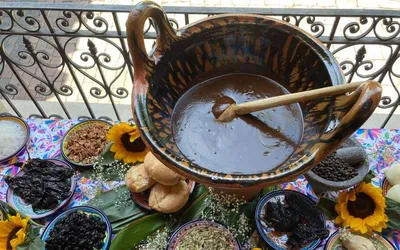
Top 7 Mexican Mole Sauces to Savor and Delight
Top 7 Mexican Mole Sauces to Savor and Delight
Mole sauce is one of the most representative foods of Mexican cuisine.
Its origin dates back to pre-Hispanic times when the original inhabitants mixed chiles with pumpkin seeds, hierba Santa, and tomato to create a sauce called “mulli,” accompanied by turkey, duck, or armadillo meat.
This was an exclusive preparation offered to the gods in ceremonial acts.
Although there are more than 50 types of Mexican Mole sauces, it is practically impossible to have an inventory of all the varieties of moles in the country.
Nevertheless, I will focus on seven of the most popular ones.
Mexican Mole Sauce history
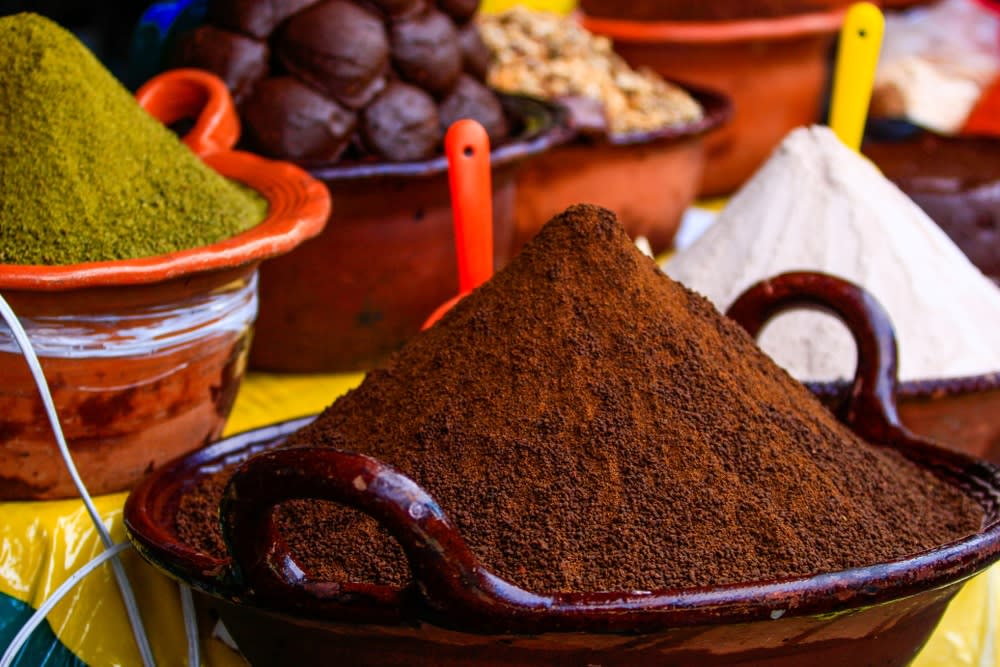
The word mole comes from the Nahuatl “mulli,” which means sauce.
The first mentions of mole are found in Bernardino de Sahagún’s “Historia general de las Cosas de la Nueva España,” where he mentions how it was prepared before the colony.
With the colonization process, new ingredients were added, and each region of the country added its unique touch, creating different styles of moles.
To this day, some fairs and competitions keep creating varieties of this preparation with innovative ingredients. Thus, this is a very much trendy food in Mexican culture.
Mexican Mole Sauces: The 7 classics and traditional
1. Mole Poblano
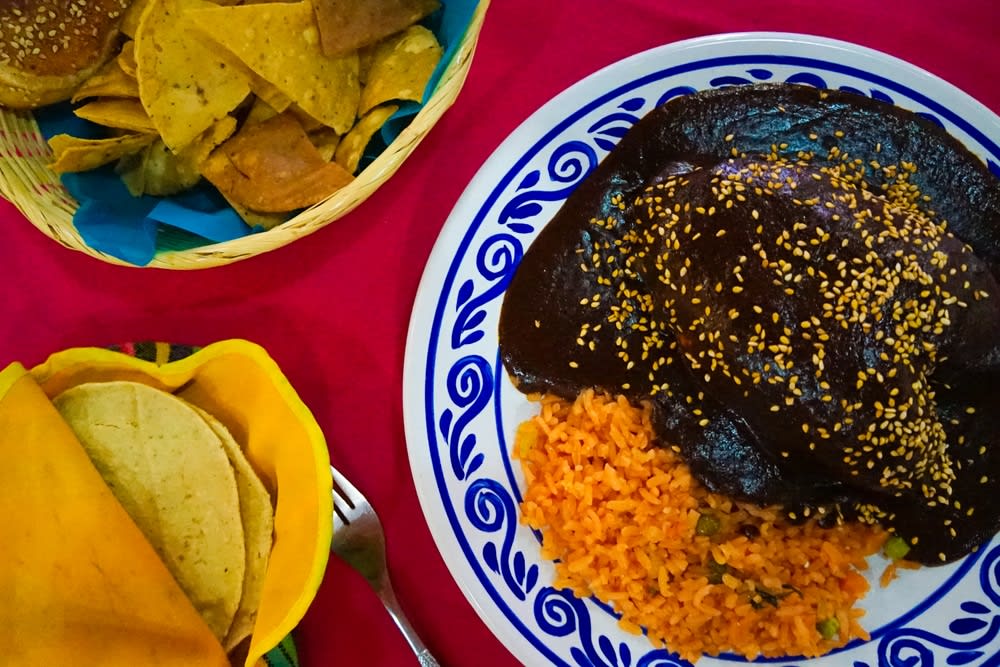
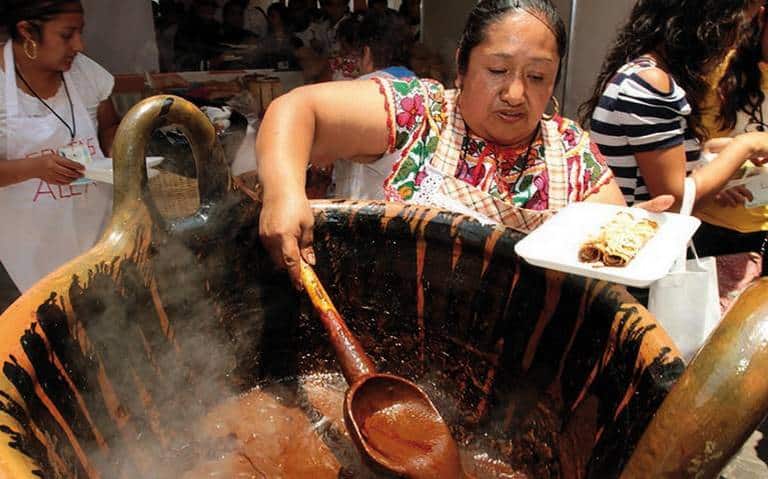
Mole poblano is a representative dish of the city of Puebla. There are several legends about the origin of this dish.
On the one hand, there is the story of San Pascual Bailón, who attributed the creation of mole thanks to a culinary miracle.
On the other hand, the writer Artemio de Valle Arizpe is the creator of the most famous account of the “history” of mole. It is mentioned that Sister Andrea de la Asunción, from the Santa Rosa convent, obtained the divine inspiration to create the mole mix.
However, according to José Luis Curiel Monteagudo in his text “Construcción y evolución del mole virreinal,” there are a series of historical inconsistencies.
Its origin is undoubtedly pre-Hispanic. The mole de guajalote (turkey) or “Totolmole” is documented by Francisco de Burgoa in colonial times. This dish was made in indigenous ceremonies as an offering to the deceased.
This type of mole sauce consisted of guajolotes seasoned with chilhuaucle chiles, smoked or black dried chiles, pumpkin seeds, hierba Santa leaves, or avocado.
Later, the ingredients that came with the colony were incorporated, and the guajolote was substituted by chicken and other proteins.
2. Mole Prieto Sauce
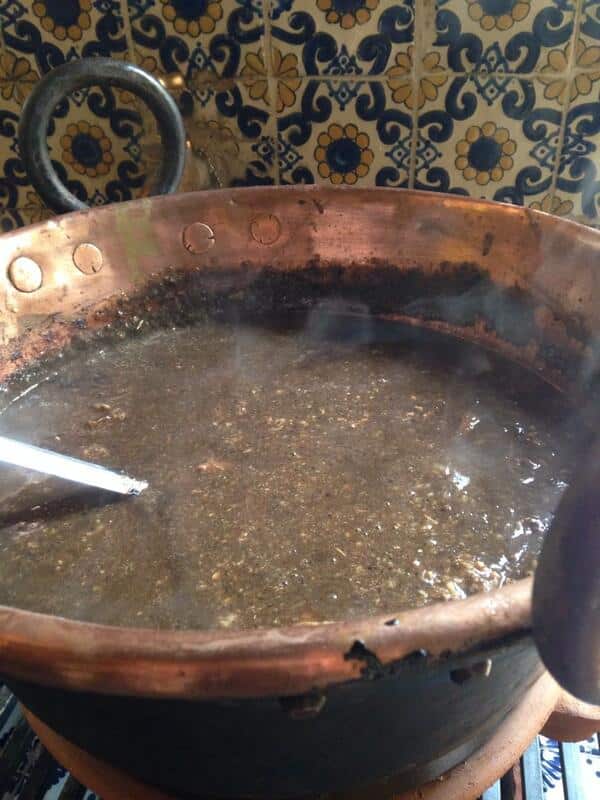
In Tlaxcala, the preparation of mole Prieto is a ritual. To begin with, the “molenderas” remove the tails of the chipotle chile, toast it and grind it in a metate.
After other processes, several holes are opened in the ground to heat the pots, and, preventing the mole from spoiling, a bottle of liquor is buried, and a cross is made with the chipotle chile and nopales (cactus paddle).
This is made for carnivals and saints’ days; in the past, it was made for weddings.
3. Mole Negro: A typical Mexican Mole Sauce from Oaxaca
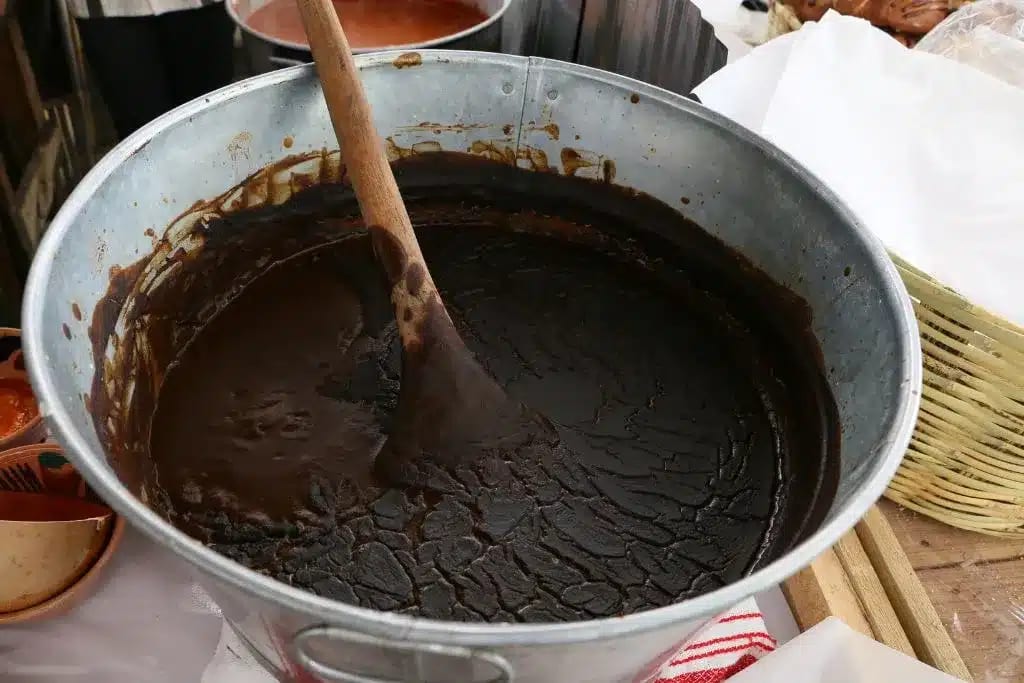

Oaxacan mole negro is the typical dish served on the Day of the Dead.
More than 30 ingredients are necessary to prepare it, among which the toasted black, red, mulato, and pasilla chihuacle chiles stand out.
It also includes burnt tortillas, plantain, pumpkin seeds, chocolate, etc.
4. Mole Amarillo (yellow)
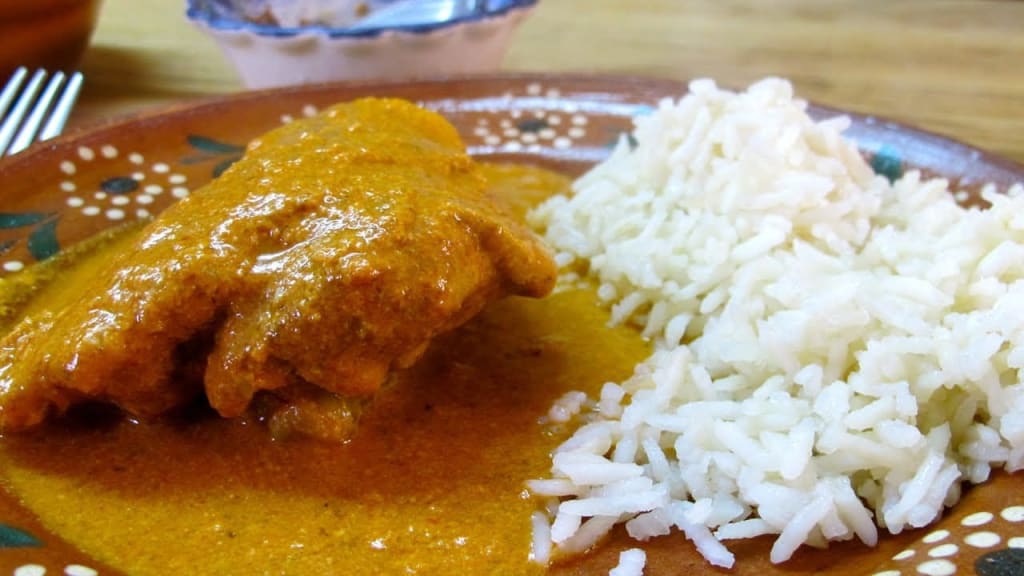
This Mexican mole, also from Oaxaca, has more versatile protein options than the others, as they are usually meats of personal choice.
The ingredients included are chile ancho, guajillo, chilcostle and costeño amarillo. Although there are versions that also include the yellow chilhuacle.
5. Mole de San Pedro Atocpan
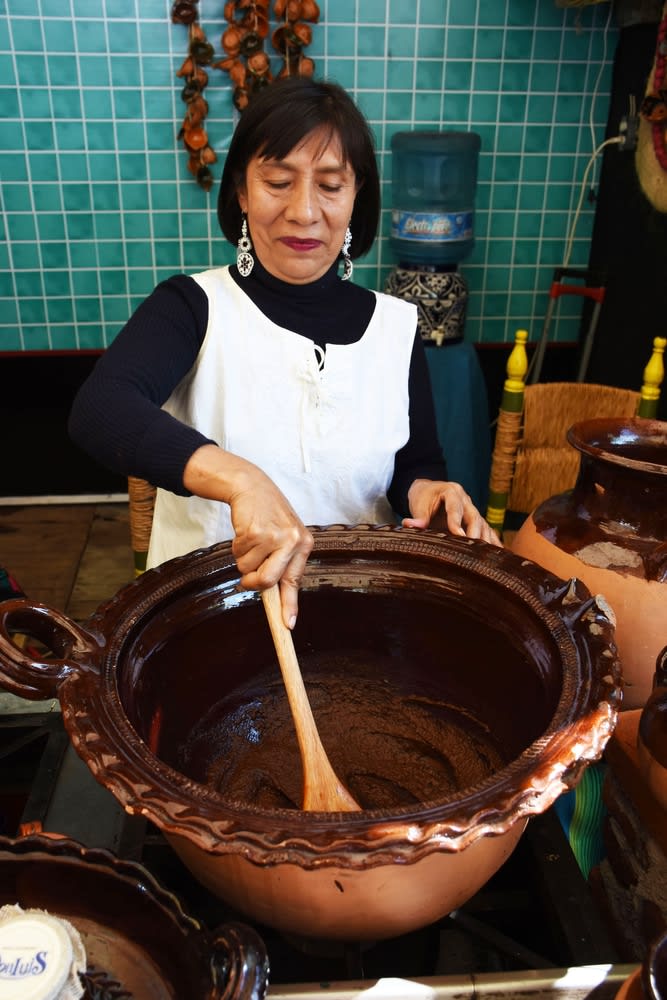
In San Pedro Atocpan (Mexico City), 90% of the population is dedicated to elaborating and selling various moles.
San Pedro is a town within the Milpa Alta delegation, whose primary economic source is mole preparation.
During October, the traditional mole fair is held.
Many families prepare different types of moles but add their personal touch. There are even those who continue to make it on a traditional metate.
6. Mole Chichilo Sauce
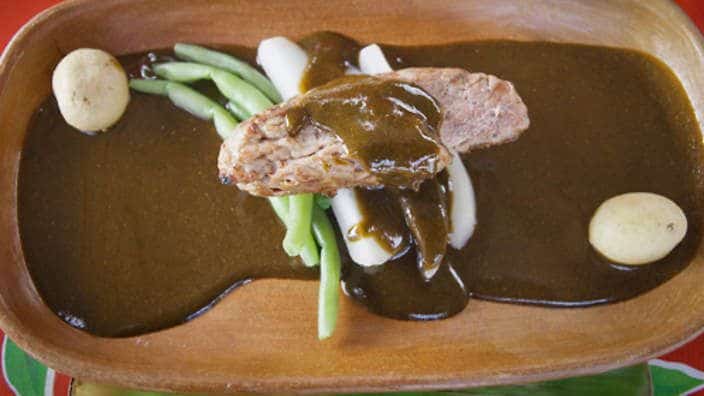
It is one of the least common moles but has a great flavor due to the combination of meats and vegetables and the avocado leaves. It is also typical in Oaxaca.
Ingredients include black chihuacle chile, pasilla, mulato (some recipes only have black chihuacle and guajillo chile), miltomate, tomato, spices (such as marjoram, pepper, cloves), and toasted tortillas (this will give it its particular color).
7. Mole Manchamanteles (tablecloth-stainer)
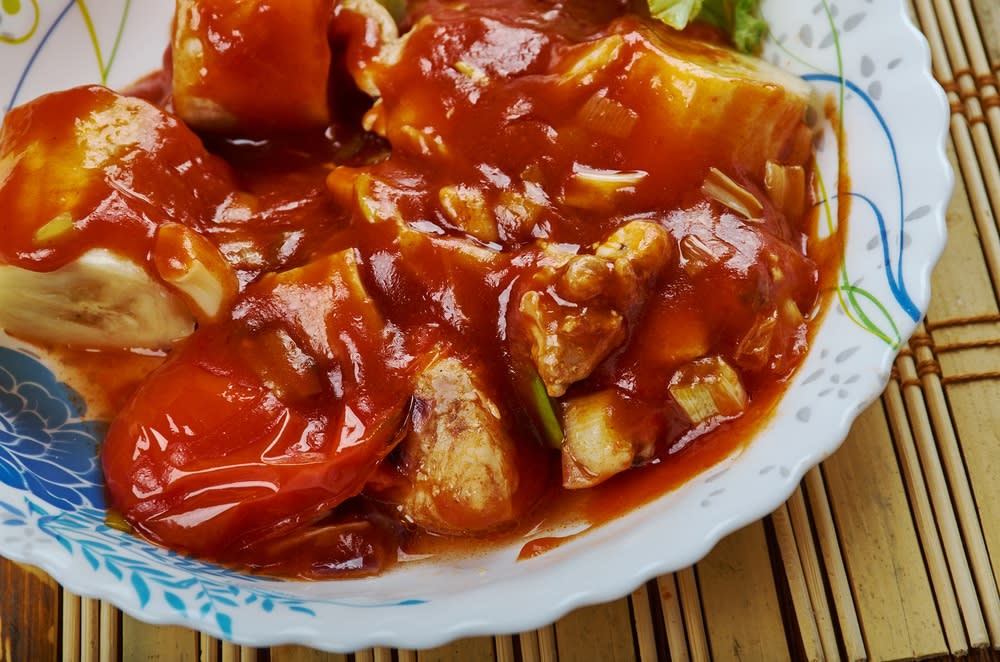
The Manchamanteles is a controversial Mexican mole sauce, as it is not considered a “mole” in some parts of the country.
Its main characteristic is that its recipe includes fruits, although they vary depending on the recipe. However, a key element is the ancho chiles.
Some people say that this exquisite delicacy originated somewhere between the states of Puebla and Oaxaca.
Types of Mexican Mole Sauces: Final Thoughts
In conclusion, Mexican cuisine is known for its rich and complex sauces and flavors, and the mole is undoubtedly one of its most iconic and beloved dishes.
While the exact number of types of Mexican moles may vary depending on the source, it is safe to say that there are several varieties, each with its unique blend of ingredients and regional influences.
From the sweet and nutty mole negro to the spicy and smoky mole poblano, each mole has a story and a taste to savor.
Whether you’re a seasoned mole sauce aficionado or a newcomer to this delicious dish, exploring the many types of this food will surely be a rewarding culinary adventure.